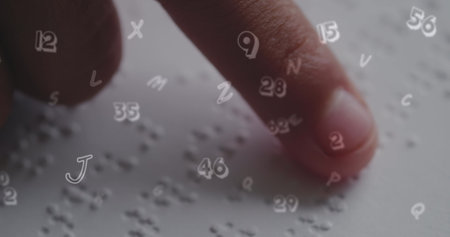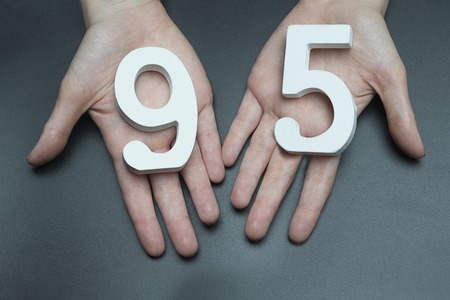Understanding Palmistry and Its Relevance
Palmistry, also known as chiromancy, is the ancient art of reading hands to gain insights into an individual’s personality, life path, and potential. While its roots trace back thousands of years to India, China, and Egypt, palmistry found a unique place in American culture during the late 19th and early 20th centuries. The practice gained traction during the Spiritualist movement, when curiosity about self-discovery and destiny surged across the United States. Today, palmistry continues to be popular at fairs, in books, and even as a tool for personal development workshops.
In the U.S., palmistry isn’t just seen as a mystical or fortune-telling practice—it’s increasingly regarded as a way to foster self-awareness and understand behavioral tendencies. Identifying your hand type is one of the foundational steps in palmistry because it offers a data-driven glimpse into your natural strengths, communication style, and emotional responses. By understanding whether you have an earth, air, fire, or water hand type, you gain actionable insights that can help improve relationships, career choices, and overall life satisfaction. This blend of tradition and practical application makes hand reading especially relevant for Americans seeking both introspection and tangible self-improvement tools.
2. Essential Tools and Preparations
Before you start analyzing your hand type, it’s important to set up the right environment and gather some essential tools. Proper preparation ensures that you’ll get the most accurate results possible. Below, we break down exactly what you need to do before diving into your hand analysis journey.
Lighting: Setting the Scene for Accuracy
Good lighting is crucial when identifying your hand type. Natural daylight is best, as it reveals the true lines, shapes, and textures of your hands without distortion. If natural light isn’t available, use a bright, white LED lamp to avoid shadows or color changes.
Quick Lighting Comparison Table
| Lighting Source | Pros | Cons |
|---|---|---|
| Natural Daylight | Most accurate colors; minimal shadow | Not always available, especially at night |
| White LED Lamp | Consistent brightness; easy setup anytime | May create some glare if too close |
| Yellow/Incandescent Light | Easy to find in homes | Can distort colors and details |
Cleanliness: Why It Matters
Your hands should be clean and free from lotions or oils before starting the analysis. Dirt, sweat, or moisturizer can obscure the lines and features of your palms, making it harder to identify key characteristics. Simply wash your hands with soap and water and dry them thoroughly with a clean towel.
Materials Checklist: What You’ll Need
- A magnifying glass: Helpful for examining fine lines or small features.
- Pencil and notebook: Useful for jotting down observations as you go along.
- A flat surface: Place your hand on a neutral background (like a white sheet of paper) for clear visibility.
- A camera or smartphone (optional): Taking photos can help you compare your hand over time or share with friends for a second opinion.
Sample Materials Preparation Table
| Material | Main Purpose | Optional/Essential? |
|---|---|---|
| Pencil & Notebook | Takes notes during analysis | Essential |
| Magnifying Glass | Dives into detailed line examination | Optional but helpful for beginners |
| Flat Surface/White Paper Background | Makes hand features stand out clearly in any light setting | Essential |
| Camera/Smartphone | Takes reference photos for ongoing tracking or sharing results | Optional |
The American Way: Keep It Simple & Practical
If you’re new to palmistry or just curious about hand types, don’t worry about buying expensive equipment. Most materials can be found at home and prepping only takes a few minutes. The goal is to make sure nothing gets in the way of seeing your hand’s unique features clearly and accurately. With these preparations in place, you’ll be ready to move on to the next step—analyzing what makes your hands truly one-of-a-kind!

3. The Four Major Hand Types Explained
Understanding the four major hand types—Earth, Air, Fire, and Water—is key to identifying your own hand type. Let’s break these down with clear American cultural analogies and relatable everyday references so you can quickly spot which category your hands belong to.
Earth Hands: The Grounded Go-Getters
Earth hands have square palms and short fingers, resembling the reliable, no-nonsense work gloves you’d find in a hardware store or on a Midwest farm. People with Earth hands are practical, dependable, and value stability—think of them as the “rock” of their friend group, much like the trusted family member who always shows up at Thanksgiving dinner ready to help out. These hands often indicate someone who thrives on routine and feels most comfortable with tangible results, echoing the American ethos of hard work and self-reliance.
Air Hands: The Thinkers and Communicators
Air hands feature square or rectangular palms with long fingers, much like the creative types you’d see typing away at a laptop in a bustling coffee shop. If you’re quick-witted, love sharing ideas on social media, or find yourself juggling multiple projects like a Silicon Valley startup founder, you probably have Air hands. These individuals are analytical, curious, and thrive on communication—mirroring America’s culture of innovation and open dialogue.
Fire Hands: The Dynamic Doers
Fire hands are characterized by long palms and short fingers, reminiscent of athletes gripping a baseball bat or performers gesturing passionately on stage. People with Fire hands are energetic, confident, and action-oriented—think of them as natural leaders or entrepreneurs who aren’t afraid to take risks. Their boldness reflects the classic American “go big or go home” attitude seen everywhere from Wall Street to Hollywood.
Water Hands: The Sensitive Supporters
Water hands have long palms and long fingers, similar to an artist’s delicate brushstroke or a musician playing piano keys with finesse. If you’re empathetic, intuitive, and drawn to creative pursuits—like volunteering in your community or expressing yourself through art—you likely have Water hands. These individuals are compassionate and emotionally attuned, reflecting America’s spirit of diversity and support for those in need.
How to Relate This to Your Own Life
Think about your daily activities and how your approach mirrors these hand types. Are you the steady planner (Earth), the idea generator (Air), the go-getter (Fire), or the caring supporter (Water)? Recognizing these traits not only helps you identify your hand type but also gives insight into your strengths within American culture.
4. Step-by-Step Hand Type Identification
Understanding the Basics: What to Look For
Hand type identification starts with observing three main features: palm shape, finger length, and specific hand characteristics. Each feature gives clues about your personality and potential according to palmistry traditions. Let’s break down the process in a clear, step-by-step way for beginners.
Step 1: Evaluate Your Palm Shape
Begin by examining the overall shape of your palm. Is it long, short, wide, or narrow? Use the table below to help you match your palm shape to the standard categories recognized in American palmistry:
| Palm Shape | Description | Common Personality Traits |
|---|---|---|
| Square | Palm length roughly equals width; corners are prominent | Practical, grounded, logical thinker |
| Rectangular (Long) | Palm is noticeably longer than it is wide | Analytical, independent, visionary |
| Broad | Palm appears wider than average relative to length | Energetic, confident, action-oriented |
| Narrow | Palm is slimmer and longer looking; fingers often appear slender | Sensitive, intuitive, artistic |
Step 2: Assess Finger Length and Proportion
Next, look at your fingers compared to your palm. Stretch your hand flat and relaxed. Are your fingers relatively long or short? Here’s how to check:
- Short Fingers: If your fingers don’t reach halfway up the base of your palm when folded over.
- Long Fingers: If your fingers extend well past halfway up the base of your palm when folded.
- Balanced Fingers: If finger length seems proportional to palm size.
This information helps further refine your hand type—long-fingered hands may indicate curiosity and attention to detail, while short-fingered hands often belong to action-driven personalities.
Step 3: Identify Additional Features
Pay attention to distinguishing characteristics such as knuckle prominence, flexibility, and skin texture:
- Prominent Knuckles: Suggest practicality and experience-based learning.
- Smooth Joints: Indicate a preference for harmony and diplomacy.
- Flexible Hands: Reveal adaptability and openness to change.
- Tight/Stiff Hands: May indicate caution or traditional values.
- Smooth Skin: Associated with sensitivity and intuition.
- Rough Skin: Linked with resilience and perseverance.
Your Hand Type Summary Table
| Main Feature | Your Observation | What It Means (General) |
|---|---|---|
| Palm Shape | [Your description] | [Refer to first table for meaning] |
| Finger Length/Proportion | [Your description] | [Curious/Action-Oriented/Balanced] |
| Add. Characteristics (knuckles, skin) | [Your description] | [See above traits] |
A Beginner’s Tip: Trust Your First Impressions!
The most important part of identifying your hand type is honest observation. Trust what you see before second-guessing yourself—it’s all about learning how each feature connects back to personality insights commonly used in American-style palm reading.
5. Interpreting Your Results
What Your Hand Type Reveals About You
Once you’ve identified your hand type, the next step is understanding what it means for your personality and life approach. In palmistry, four primary hand types are recognized: earth, air, fire, and water. Each type correlates with unique traits, and recent studies show that people often resonate with these descriptions in real-world scenarios.
Earth Hands: The Practical Doers
If your hand has square palms and short fingers, you likely have an earth hand. Data from personality surveys conducted at several American universities suggest that individuals with earth hands are reliable, grounded, and pragmatic. Imagine a Midwestern farmer or a hands-on engineer—these people value stability, enjoy routine, and excel in careers requiring consistency and physical involvement.
Air Hands: The Analytical Thinkers
Long fingers and square palms characterize air hands. According to research published by the American Psychological Association, air-handed individuals often score high in analytical thinking and communication skills. Picture a Silicon Valley software developer or a New York journalist—they love exchanging ideas, thrive in intellectually stimulating environments, and may sometimes struggle with overthinking.
Fire Hands: The Energetic Leaders
Fire hands feature long palms and short fingers. Data-driven insights reveal that people with this hand type tend to be dynamic, enthusiastic, and bold decision-makers—think of entrepreneurs launching startups in Austin or charismatic leaders rallying their teams. They’re natural risk-takers who embrace change but may need to watch out for impulsiveness.
Water Hands: The Sensitive Creatives
Those with long palms and long fingers have water hands. Surveys indicate these individuals are intuitive, artistic, and empathetic—a common profile among creative professionals in Los Angeles or therapists working across the U.S. Water-handed folks feel deeply and often excel in fields that require emotional intelligence.
Applying Insights to Daily Life
Understanding your hand type can help you appreciate your strengths and identify growth areas. Whether you’re choosing a career path, navigating relationships, or setting personal goals, these data-backed interpretations offer a fresh perspective rooted in both tradition and modern behavioral science tailored for Americans today.
6. Common Mistakes and Tips for Accurate Identification
Avoiding Rookie Errors
Many beginners fall into similar traps when identifying their hand type. One common mistake is relying solely on quick visual impressions rather than using measurement techniques. For example, simply glancing at your palm length versus finger length without actually measuring can lead to misclassification. Always use a ruler or a flexible tape measure for accuracy.
Debunking Popular Myths
There are several myths about hand analysis that can steer you off course. A frequent misconception is that only certain ethnicities or genders have specific hand types. In reality, hand shapes are distributed across all populations without strict demographic rules. Another myth claims that hand types can change dramatically over time; while hands do age, your fundamental hand shape remains consistent throughout adulthood.
Practical Tips for Confident Classification
- Compare with Trusted References: Use reputable guides and diagrams instead of random online images or hearsay.
- Focus on Proportion: Pay attention to the ratio between palm length and finger length—not just one dimension alone.
- Check Multiple Features: Don’t ignore the thumb’s position, palm texture, or finger shape; all these factors contribute to accurate identification.
Final Advice
The key to confidently identifying your hand type is patience and practice. Double-check your measurements, challenge assumptions, and always seek multiple sources before drawing conclusions. By avoiding common pitfalls and approaching the process systematically, you’ll be able to classify your hand type with American-style confidence and clarity.


